I was never a competitive child, especially when it came to board games, with the exception of Stratego.
When I played Stratego I became a focused military commander: organising my troops to ruthlessly annihilate the enemy. Woe betides anybody – and generally my beloved granddad was the only person who would put up with my histrionics during game play – who got in my way. It’s a hollow boast, I realise, but I never, ever lost a game of Stratego.
It’s a brilliant game: two players each control a 40 piece army on a board made up of 10 x 10 squares. Each piece represents a member of your platoon (different rankings from Spy and Scout up to Marshal) or an object. The purpose of the game is to both protect your flag (one of the pieces) and capture your opponent’s. This is achieved by strategically arranging some of your troops to defend your flag while simultaneously forging others forward to take theirs.
Each player begins the battle with one Marshall, one General, one Spy, two Colonels, three Majors, four Captains, four Lieutenants, four Sergeants, five Sappers and eight Scouts. You can lay them out on the board in whatever order or pattern you like, with their ranks facing you.
Alongside all of the ranked troops you also have a number of bombs. These must be tactically placed on your side of the board in the hope that the opposing side’s troops will stumble into them and blow themselves up. The only servicemen immune to explosions are the Sappers: they are able to diffuse the bombs and proceed past them.
Once you have placed your flag and bombs you are not able to move them for the duration of the game, except when a bomb has been triggered as it is then taken out of play.
You take it in turns to have your go, moving each piece one space at a time (bar the Scout; more of which later). When you land on a square containing your challenger’s soldier you are able to remove them from the board if your piece has a higher ranking than theirs. Vice versa, if theirs is more decorated than yours then your piece is the one to leave the game. As you’d expect, the higher the rank, the more lower-ranked pieces they can eradicate. The Marshal, for instance, can take out anybody on the board but can only be removed by the Spy so many players will use the Marshal to protect their flag. For this reason, this makes the Spy one of the most useful pieces in the game but as it is vulnerable to all of the other ranks it is worth protecting it heavily.
The Scouts are a crucial part of your battle plan. They are able to move any number of empty spaces in a straight line and can be used to test out unknown enemy pieces (when confronted, your opponent must tell you what rank you have approached). This ploy means that you will generally lose any Scout that you send out on reconnaissance but you have multiples of these initially so they are fairly expendable. Once you know which pieces your enemy has, and where, you can use a higher rank to get rid of them.
The game allows you to strategically think out your moves. Where are you going to hide your flag and how will you protect it? How are you going to find your opponent’s bombs and remove them, without losing too many of your own personnel? Are you going to send your big guns straight out into the field or employ some lower ranking troops to prepare the ground first? (See, I told you I took it very seriously…)
A game similar to Stratego has been in around in various formats for over 100 years. In 1908, a patent was filed by a French woman, Mademoiselle Hermance Edan, for ‘a battle game with mobile pieces on a game board’ (although, obviously, she filed it in French). A year later, the French Patent Office granted the patent and by 1910 a game called L’Attaque was being sold via a manufacturer.
The rules to L’Attaque were much the same as Stratego is now, although it was played on a 9 x 10 board and each player only had 36 pieces to move. The pieces had pictures of French soldiers in modern uniform (modern in the early 1900s, anyway) as opposed to the Napoleonic emblems that feature later on in Stratego.
British board game and jigsaw puzzle producer H.P Gibson & Sons (later just Gibson) bought the rights to L’Attaque in 1925 and began selling it here, using the same name.
Stratego itself came into existence in the early 1940s. Jacques Johan Mogendorff registered the name as a trademark in 1942 and licensed the game to Dutch company Smeets and Schippers four years later. In 1958 and 1959, Hausemann and Hotte (H&H) took on the European and global licenses respectively. When Jacques passed away in 1961, H&H also acquired the trademark for Stratego and then sub-licensed it to Milton Bradley so it could be sold in the U.S.
An electronic version of Stratego arrived in the 1980s: attacks on your opposition were rewarded with music to let you know whether or not they had been successful and capturing your enemy’s flag resulted in a very pleasing burst from the 1812 Overture. I never played the techno version myself but I did take to giving my own hearty rendition of Tchaikovsky’s masterpiece whenever I won. (Which was all the time – have I mentioned that?)
As with many of the most popular games (Monopoly for example), there have been a number of variations created over the years. Multiple player, variant versions and themed sets (e.g. Lord of the Rings, Star Wars and Marvel Comics) have all been on offer, as well as attempts at interactive Stratego computer programs.
Hard core Stratego fans can also enter one of the many regular live competitions around the world: contests have been held in London, the Netherlands, Cambodia and Belgium amongst others and the Computer Stratego World Championships are hosted online.
Talking of online, I’ve just found an app that allows you to play Stratego against an AI opponent. I’m off to gather my troops. Time to command and conquer once again!




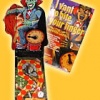
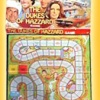

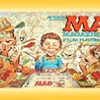

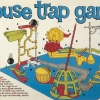
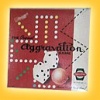
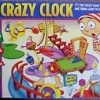


Do You Remember Stratego?
Do You Remember Stratego?